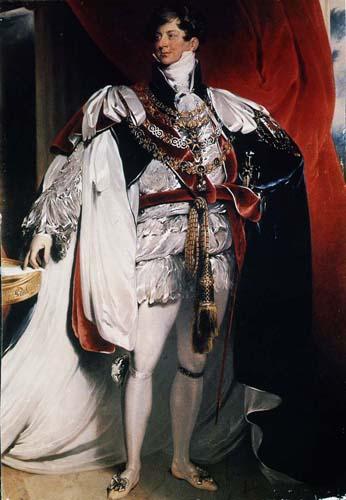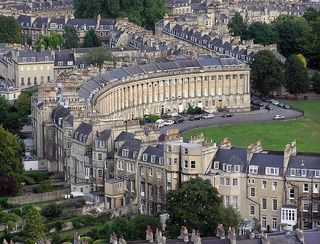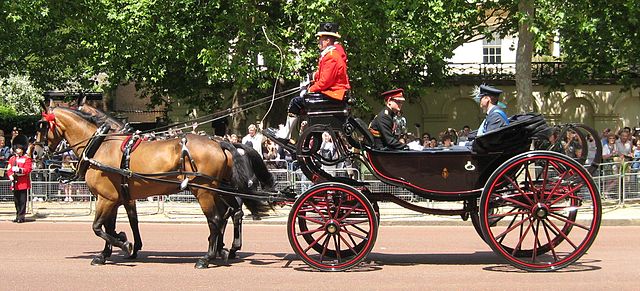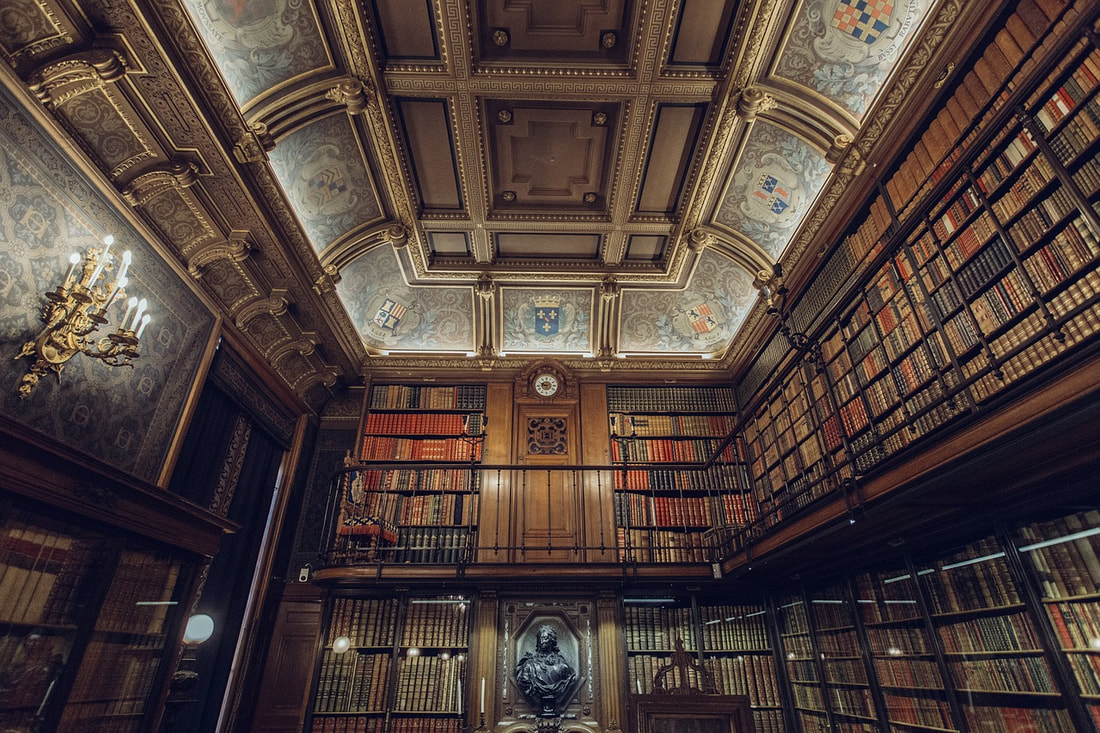History Articles1. The Lady's Wardobe
2. The Gentleman's Wardrobe 3. Regency Style Photo Gallery 4. Regency Homes 5. The Peerage 6. Singular Wills To View a Splendid Map of London in 1807, click the link! |
What Is The Regency Period?The nine-year period from 1811-1820, when England was ruled by a “Regent” rather than a King, is known as the Regency period.
For years, “Mad” King George the Third had been suffering from mental illness, but by 1811, his condition had become so serious that he was no longer able to fulfill his duties as monarch. When the royal physicians declared there was no further hope of His Majesty’s recovery, Parliament voted to install his firstborn son, George, the Prince of Wales, as the acting ruler in his father’s stead—in other words, Prince George became the Prince Regent, the ruling monarch acting on his father's behalf. He remained the Regent until his father died nine years later in 1820; he then officially succeeded to the throne, becoming King George the Fourth. There is another sense in which the word “Regency” is used, however. Historians often refer to the “greater Regency” as a distinct cultural period from about 1790 to 1830. The two historical events used as book-ends to this 40 year span are: the French Revolution (1789), bringing an abrupt halt to the Georgian period, and the accession of Queen Victoria to the British throne in 1837, marking the official start of the Victorian period. (Some prefer to use 1832 as the line of demarcation because it was the year of the Reform Act.) In a cultural sense, the greater Regency was quite different from what came before or after it. The Regency was neither as wild and self-indulgent as the Georgian period nor as strict and self-improving as the Victorian. Instead, the Regency struck more of a balance between these two extremes. Also known as the “Age of Elegance,” the Regency was a golden age of letters, music, and architecture, as well as budding scientific inquiry and invention. Finally, the Regency was a time of intense social change. Many of the values and institutions that had been held sacred for centuries were being turned upside-down. Regency people found themselves entangled in the midst of three simultaneous revolutions:
To learn more about the complex societal changes taking shape during the Regency—changes that laid the groundwork for our modern culture—please see: THE AGE OF NAPOLEON by Will and Ariel Durant THE BIRTH OF THE MODERN: WORLD SOCIETY 1815-1830 by Paul M. Johnson A HISTORY OF PRIVATE LIFE, VOL. 4: FROM THE FIRES OF REVOLUTION TO THE GREAT WAR, edited by Michelle Perrot THE PRINCE OF PLEASURE by J.B. Priestley |
|
"The love of learning, the sequestered nooks, And all the sweet serenity of books." ~ Henry Wadsworth Longfellow |
History LinksMust-see links for Regency research.
|
Favorite History Reference Books
In addition to the books mentioned above and cited in my articles, here are some more selected favorites from my collection that I use constantly and love:
* A to Z of Regency London, The. Richard Horwood's Map of London from 1792-9 updated by William Faden in 1813. Intro. by Paul Laxton. Harry Margary, Lympne Castle, Kent, in assoc. with Guildhall Library, London, 1985.
* Ashelford, Jane. The Art of Dress. The National Trust, 2000 ed.
* Culver, Henry B. The Book of Old Ships. Dover, 1992 (Orig. 1924).
* Erickson, Carolly. Our Tempestuous Day. Praeger, 1971.
* Eyewitness Guide to Great Britain, DK Publishing, Inc. 1999. (A Must Have as a starting point for researching settings within the various regions of Great Britain.)
* Glasse, Hannah. The Art of Cookery Made Plain and Easy. (1805 Edition, reprinted 1997.)
* Haythornthwaite, Phillip J. Weapons & Equipment of the Napoleonic Wars. Arms and Armour, 1996. (AND, by the same author) The Armies of Wellington, Brockhampton Press, 1994. (Anything by him is top notch!)
* Hendrickson, Emily. The Regency Reference Book. (Self-published, see author's website.)
* Hudson's Historic Houses and Gardens, Castles, and Heritage Sites. Norman Hudson and Co. and The Globe Pequot Press, 2003.
* Laudermilk, Sharon and Teresa L. Hamlin. The Regency Companion. Garland, 1989.
* Low, Donald A. The Regency Underworld. Sutton, 1999. (His Victorian Underworld is even better imo, but it covers decades outside our period.)
* Margetson, Stella. Regency London. Morrow, 1986.
* Morley, John. Regency Design: Gardens, Buildings, Interiors, Furniture. Abrams, 1993.
* Parissien, Steven. Regency Style. Phaidon, 1992.
* Ribeiro, Aileen. The Art of Dress: Fashion in England and France 1750-1820. Yale, 1995.
* Tames, Richard. London Walks. (Anything by Richard Tames is first-rate! He is the author of over 90 books and a Blue Badge Guide in London.)
* Weinreb, Ben and Christopher Hibbert, editors. The London Encyclopedia. Macmillan, 1983. (A Must Have! Anything by C. Hibbert is great.)
Helpful Hint: Some of these books are hard to find. Check www.abebooks.com or you can try ordering from Amazon UK, which has many more resources on British history than Amazon U.S.
* A to Z of Regency London, The. Richard Horwood's Map of London from 1792-9 updated by William Faden in 1813. Intro. by Paul Laxton. Harry Margary, Lympne Castle, Kent, in assoc. with Guildhall Library, London, 1985.
* Ashelford, Jane. The Art of Dress. The National Trust, 2000 ed.
* Culver, Henry B. The Book of Old Ships. Dover, 1992 (Orig. 1924).
* Erickson, Carolly. Our Tempestuous Day. Praeger, 1971.
* Eyewitness Guide to Great Britain, DK Publishing, Inc. 1999. (A Must Have as a starting point for researching settings within the various regions of Great Britain.)
* Glasse, Hannah. The Art of Cookery Made Plain and Easy. (1805 Edition, reprinted 1997.)
* Haythornthwaite, Phillip J. Weapons & Equipment of the Napoleonic Wars. Arms and Armour, 1996. (AND, by the same author) The Armies of Wellington, Brockhampton Press, 1994. (Anything by him is top notch!)
* Hendrickson, Emily. The Regency Reference Book. (Self-published, see author's website.)
* Hudson's Historic Houses and Gardens, Castles, and Heritage Sites. Norman Hudson and Co. and The Globe Pequot Press, 2003.
* Laudermilk, Sharon and Teresa L. Hamlin. The Regency Companion. Garland, 1989.
* Low, Donald A. The Regency Underworld. Sutton, 1999. (His Victorian Underworld is even better imo, but it covers decades outside our period.)
* Margetson, Stella. Regency London. Morrow, 1986.
* Morley, John. Regency Design: Gardens, Buildings, Interiors, Furniture. Abrams, 1993.
* Parissien, Steven. Regency Style. Phaidon, 1992.
* Ribeiro, Aileen. The Art of Dress: Fashion in England and France 1750-1820. Yale, 1995.
* Tames, Richard. London Walks. (Anything by Richard Tames is first-rate! He is the author of over 90 books and a Blue Badge Guide in London.)
* Weinreb, Ben and Christopher Hibbert, editors. The London Encyclopedia. Macmillan, 1983. (A Must Have! Anything by C. Hibbert is great.)
Helpful Hint: Some of these books are hard to find. Check www.abebooks.com or you can try ordering from Amazon UK, which has many more resources on British history than Amazon U.S.
Policy Links
Privacy Policy
Cookies Policy
Terms of Service
Privacy Policy
Cookies Policy
Terms of Service
© Gaelen Foley 2023




